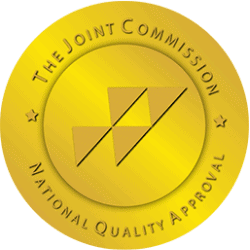Crack Addiction: History, Signs & Symptoms
Crack is a highly addictive drug that can have devastating consequences for those who become addicted. Crack addiction impacts the life of the addict and the lives of those around them. Therefore, it is vital to enter a drug treatment program as soon as possible to overcome crack addiction.
Crack cocaine is a highly addictive and destructive drug. It is made from powdered cocaine and water and is smoked or injected. Crack cocaine can cause intense feelings of pleasure and euphoria, which can lead to abuse. What are the risks of crack cocaine use? Crack cocaine use can be very dangerous. It can lead to addiction and damage the brain, heart, lungs, liver, and other organs. Crack users also are at risk of committing robbery, violence, and other crime.
The effects of crack cocaine use depend on how much someone uses it and how they use it. Generally speaking, crack users have more intense feelings of pleasure and euphoria than users of powder cocaine. This makes it easier for them to become addicted to the drug.
What’s the Difference Between Crack and Cocaine?
Cocaine is a naturally occurring chemical derived from the leaves of the coca plant. The process of refining cocaine and combining it with other chemicals in order to produce crack is known as “cooking” or “freebasing.” The process of making crack is called “freebasing” because the cocaine in crack is not in its natural state. Freebasing allows the drug to be easily absorbed into the bloodstream.
History of Crack Cocaine
In the 1980s, crack cocaine was found to be more addictive than other forms of cocaine. It was more easily absorbed by the body through the lungs and could cause severe health problems.
Drug dealers needed a way to make more money so they found a way to take powdered cocaine and turn it into rock crystals, i.e., crack cocaine. This new form of the drug brought about a different kind of high, one that was much more euphoric and much more addictive. During the 90s, many were using crack in almost all 50-states and many countries around the world.
In the early 2000s, Europe experienced a crack-boom just as the United States had during the 90s.
Why is Crack so Addictive?
These neurotransmitters are critical for controlling mood and feelings, so when they are at high levels, it can be very difficult to stop using crack cocaine. Additionally, crack cocaine users often report intense cravings and urges to use the drug, which can be extremely difficult to resist.
The Signs and Symptoms of Crack Addiction
The signs and symptoms of crack addiction include:
- Tolerance – users need greater and greater doses of crack to get the same high, leading to an increased risk of overdose
- Changes in mood – users may become euphoric and irritable, or depressed and anxious
- Negative changes in physical health – users may experience insomnia, an increase in heart rate, liver damage, or respiratory problems
Recognizing the addictive qualities of crack can be one step toward overcoming addiction.
Treatment Options for Crack Addiction
Crack Addiction Treatment in South Florida

Dr. Alam is an internationally renowned psychiatrist with academic affiliations with Northwestern University and University of Illinois, Chicago where he completed his residency training. He has been a principal investigator for over forty studies and has been involved in research leading to the approval of most psychiatric medications currently on the market. He is the founder of the Neuroscience Research Institute which continues to conduct research on cutting edge medication and interventional psychiatry. Dr. Alam is a Distinguished Fellow of the American Psychiatric Association and the American Society of Addiction Medicine. He has won several awards and has been featured extensively on radio and television.







